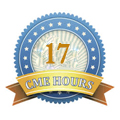
Ashokan Arumugam
Majmaah University, KSA
Title: The pitfalls of self-plagiarism: Implications for physical therapy research
Biography
Biography: Ashokan Arumugam
Abstract
The practice of research without involving in any scientific misconduct or academic malpractice is ideally expected from every researcher. Plagiarism is a form of unethical research practice which involves copying of others work and claiming as one’s own asset without citing the original source of that work. Despite the fact that plagiarism violates the ethics in writing and publishing, it has not been eradicated yet. This study focuses on the prevalence, types, and consequences of self-plagiarism, and also the ways to combat this issue, which a Physical Therapy researcher must know. Surprisingly, the definition of plagiarism does not include self-plagiarism as such. Self-plagiarism is typically defined as reusing one’s previously published work in their following publications without clearly citing their previous work. Moreover, self-plagiarism includes text recycling, redundant publication, augmented publication, and salami-slicing/segmented publication. Self-plagiarism can lead to copyright infringement, excessive loading of editorial and peer-review strategies, and manuscript retraction. ‘Self-citation’ is a useful strategy to prevent self-plagiarism. However, all authors must adhere to the recommendations of the Committee on Publication Ethics to prevent any form of plagiarism. Some software or databases such as Déjà vu, eTBLAST , Cross-Check, WCopyfind, and SPlaT can be used by the authors to detect self-plagiarism before publishing their work. In summary, self-plagiarism infringes the writing and publishing ethics, and appropriate measures should be followed by every Physical Therapy researcher to detect, combat, and prevent this form of research malpractice.

